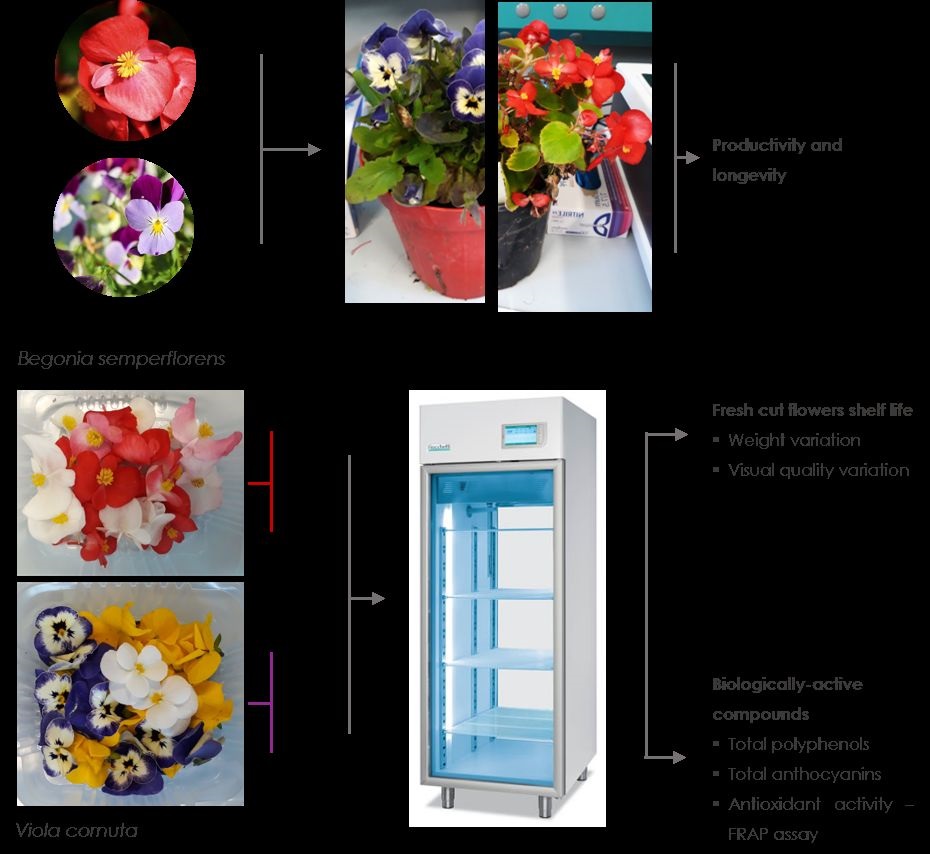
Published 2020-05-04
Keywords
- anthocyanins,
- antioxidant activity,
- fresh cut flowers×,
- polyphenols×,
- postproduction
- pot plants,
- shelf-life ...More
How to Cite
Funding data
-
European Commission
Grant numbers The research was funded by the program Interreg Alcotra Francia Italia V-A, project n. 1139 “ANTEA - Attività innovative per lo sviluppo della filiera transfrontaliera del fiore edule”
Abstract
The edible flowers are sold as pot plants or fresh cut produce and are attracting interest recently thanks not only to their organoleptic characteristics but also to their content in bioactive molecules. However, there is little information about the variations that these characteristics undergo during postharvest. In this study, the productivity and longevity of Begonia x semperflorens-cultorum Hort. and Viola cornuta L. pot plants were evaluated in an interior environment simulating the house conditions. Besides, the effect of cold storage (4°C) was evaluated on the aesthetic quality and the bioactive compounds content (total polyphenols, total anthocyanins, antioxidant activity through FRAP assay) of B. semperflorens and V. cornuta fresh cut flowers, using two different packaging, modelling a plastic box or a flowpack. The results suggest that V. cornuta could be a better choice for retailers because of its longer shelf life and better maintenance of its content in bioactive compounds, especially in the flowpack packaging. Conversely, B. semperflorens could be more suitable as pot plant, showing more adaptability and flower production in a domestic environment.





